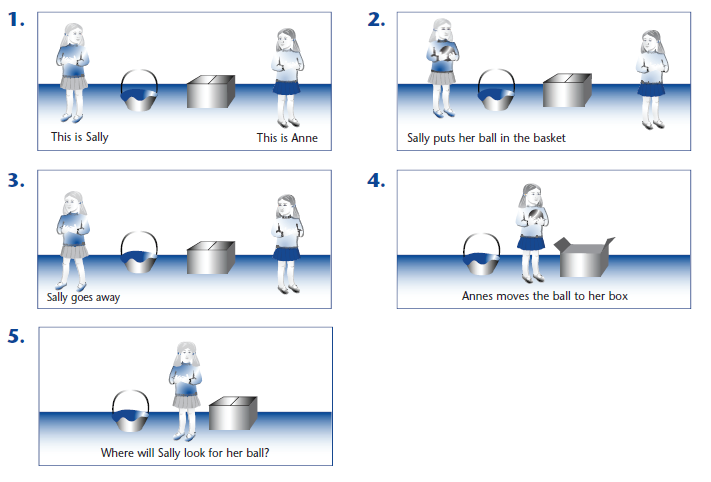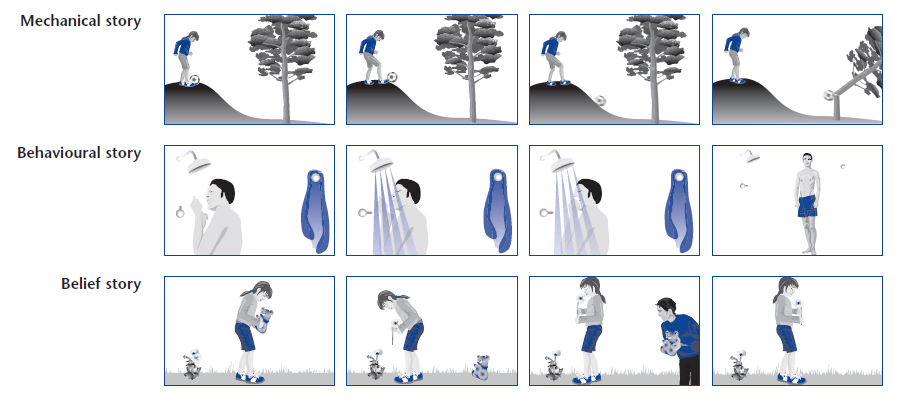Methods of Study
The term ‘autistics’ is commonly used as a short hand – however, it is preferable to use the phrase ‘people with autism’ to indicate that autism does not affect the whole personality; there is a danger that a person with autism (or any mental disorder) becomes perceived as nothing but their condition.
1. Sally–Anne test
- Sally puts her ball in her basket and leaves the room.
- Anne moves the ball to her box.
- Sally returns. Where will she look for her ball?
People who have a theory of mind will say that Sally will look in her basket, whereas people lacking a theory of mind (e.g. autistic children) will say that Sally will look in Anne’s box (because they cannot perceive that another person will think differently to them and they know that the ball is in Anne’s box).

2. The ‘Smartie tube’ test
A child is shown a tube of Smarties and asked what is inside. The answer is inevitably ‘Smarties’.
The child is then shown that a pencil is inside and then again asked what is inside and answers ‘pencil’. Finally, the child is told that another child (Susan) is going to play the game and is asked what Susan will answer to the question, ‘What is inside?’. A child with a theory of mind will say ‘Smarties’, but autistic children (lacking theory of mind) tend to answer ‘pencil’.
3. Comic strip stories

Theory of mind can be tested by asking children to arrange pictures into simple stories. In order to do this, a child has to imagine what the story character is thinking.
Baron-Cohen et al. (1986) tested the three groups of children (autistic, Down’s Syndrome and ‘normal’) on the three types of stories. Autistic children found most difficulty with the belief story (requiring a theory of mind), but did better than ‘normal’ children on the mechanical story (no theory of mind).
